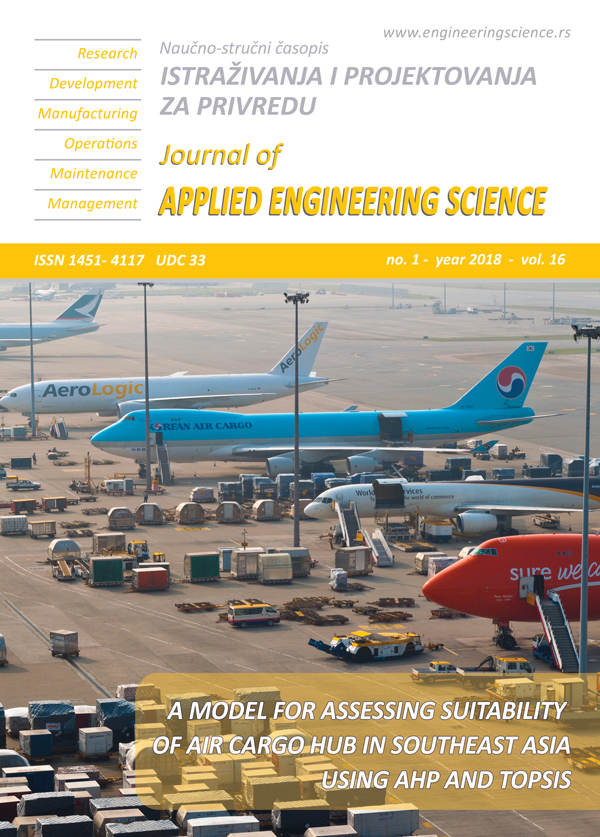INFLUENCE OF THE SHADOW ECONOMY ON ECONOMIC GROWTH
Abstract
Shadow economy is being paid a lot of attention in the world. This field of research is rather complex, specific and has a number of changeable characteristics. Therefore, the shadow economy has a number of problems to study.
The scale and scope of the shadow economy are so that it is becoming the second one. Meantime, it has a great potential for an ordinary economy to grow. Therefore, it is obvious that the paper is relevant from a practical point of view.
The aim is to study the influence of shadow activities on economic growth and to identify development prospects based on the analysis of the existing capacity. The authors use scientific methods of research such as empirical, historical and theoretical ones (for example, literature analysis, system analysis and research, settlement and constructive analysis, vertical and horizontal analysis). Economical and statistical methods (comparison, summary and grouping; the method of absolute and relative values, average values) are also used in the study. The authors believe that the development of the shadow economy causes both negative and positive consequences for the economy and for society itself. Therefore, they should be considered when implementing the economic policy of the country.
References
Afanasyeva, L., & Tkacheva T. (2015) Use of statistical tools when monitoring threats to na-tional security, / Economic Annals-XXI (2015), 155(11-12), 36-39
Varvanin, A. A. (2014) the Shadow economy and economic growth http://thsp.ru/issues/issue0506/090510.htm
Friedrich Schneider, Andreas Buehn, Claudio E. (2008) Montenegro Shadow Economies All over the World New Estimates for 162 Countries from 1999 to 2007
The Shadow Economy in Europe, (2013) https://www.atkearney.com/documents/10192/1743816/The%20Shadow%20Economy%20in%20Europe%202013.pdf
Glazyev, S. (1995) Prospects for economic growth in 1996 // the Questions of economy.. No. 5.
Fellow A. A., Caporaso E. A. (2006) the Shadow economy and economic growth the Bulletin of Omsk University. Series "Economy". No. 3. S. 6-7. file:/ /tenevaya-ekonomika-i-ekonomicheskiy-rost.pdf
Kaufmann D., Kaliberda A.(1996) Integrating the Unofficial Economy into Dynamics of Post-Socialist Economies: A framework for Analysis and Evidence // Development Discussion Paper № 558. Harvard Institute for International De-velopment. P. 81-120.
Latov Y. V. (2009) the Economy outside the law // essays on the theory and history of shadow economy: Moscow public scientific Fund. URL: http: //www.krugosvet.ru/ arti-cles/103/1010314/1010314a1.htm
Lysine O. M. Influence of shadow economic activity on the quality and pace of economic growth
Matsievsky N. S. (2010) the Shadow economy: analysis and evaluation // Izvestiya TPU. No. 6. URL: http://cyberleninka.ru/article/n/tenevaya-ekonomika-analiz-i-otsenki
Popov Yu. N. (2005).The shadow economy in the system of market economy: textbook / Yu. Popov, M. E., Tarasov, M.: a Case – 240 p.
Peskova D. R. (2007) the Shadow economy and economic growth – identification of areas of interaction // the State policy of counteraction of corruption and the shadow economy: Mater. Vseross. scientific Conf. – M.: My "Scientific expert". P. 360-374.
Pyle D.J. (1989) Tax Evasion and the Black Economy. Hampshire, Macmillan.
Schneider F., Enste D. (2000) .Shadow Economies: Size, Causes and Consequences // Journal of Economic Literature. Vol. 38. № 1. P. 100.
Toffler A. (1980 ), The Third Wave. N.-Y., Р. 222
Tsiklauri, V. Y., Babenko I. V. (2016) Mechanism for datenepali economy in the framework of the policy of economic security of Russia / V. Ju. Tsiklauri, I. V. Babenko// news SWSU. The Economic Series. Sociology. Management. – 2016. - – № 2. – S. 27-37.
ViktoriaTciklauri, Alexandra Devyatilova, Roman Artemov and Svetlana Markina Shadow Globalization as a Threat to World Economic Growth / Proceedings of the 29th International Business Information Management Association Conference Education Excellence and Innova-tion Management through Vision 2020: From Regional Development Sustainability to Global Economic Growth. 2017. P. 2478-2489

